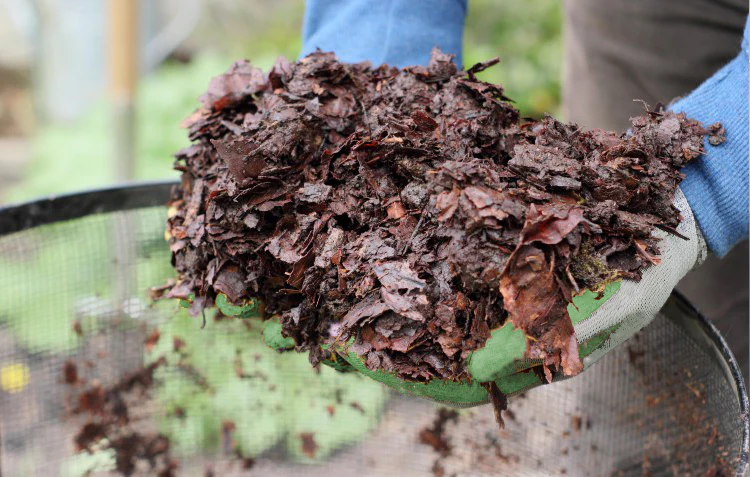Guides
How to Make Leaf Mold to Boost Plant Health
Have you ever raked up piles of autumn leaves and thought of them only as yard waste? Here’s the truth: those leaves are gardening gold. When broken down properly, they turn into something called leaf mold – a rich, crumbly soil conditioner that improves plant health in amazing ways. And the best part? It costs nothing but time and a little patience.
Leaf mold isn’t just another compost substitute. It’s a secret weapon for healthier soil, stronger roots, and thriving plants. Let’s take a closer look at why it works, how to make it, and how you can use it to give your garden a natural boost.
You may like: Hardiness Zone 3 – Best Plants to Grow in Your Garden
What Is Leaf Mold and Why Does It Matter?
Leaf mold is simply decomposed leaves. Unlike traditional compost, which breaks down quickly thanks to nitrogen-rich materials like food scraps, leaf mold forms slowly through the work of fungi. The result is a dark, crumbly, earthy material that acts like a sponge in your soil.
Think of it as your garden’s version of a multivitamin. It doesn’t add a ton of nutrients on its own, but it improves soil structure, helps retain moisture, and encourages beneficial organisms to flourish. That combination makes it easier for plants to access the nutrients already in your soil.
Benefits of Leaf Mold for Your Garden
Adding leaf mold to your beds does more than just recycle leaves. It provides long-term advantages, including:
-
Better moisture retention: Leaf mold holds several times its weight in water, reducing the need for frequent watering.
-
Improved soil structure: It lightens heavy clay soils and adds body to sandy soils, creating the perfect balance for roots to grow.
-
Boosted microbial life: Fungi and beneficial microbes thrive in leaf mold, helping plants resist disease and stress.
-
Free mulch and soil conditioner: Instead of buying bags of amendments, you’re creating your own right at home.
In short, leaf mold transforms “yard waste” into a resource that makes your soil healthier, your plants stronger, and your gardening more sustainable.
How to Make Leaf Mold
Making leaf mold is simple, but it does require patience. You can choose one of two easy methods:
1. The Leaf Pile Method
-
Rake leaves into a pile in a shady corner of your yard.
-
Moisten the pile until it feels like a damp sponge.
-
Leave it alone. Check periodically to ensure it doesn’t dry out.
-
After 6-12 months, the leaves will have broken down into dark, crumbly leaf mold.
2. The Bag Method
-
Collect leaves in black plastic garbage bags.
-
Moisten them slightly before sealing.
-
Poke a few holes in the bags for airflow.
-
Store them in a shady area. In 6-12 months, you’ll have ready-to-use leaf mold.
The key is patience. Unlike hot compost, which breaks down quickly with nitrogen, leaf mold relies on fungi and slow decomposition. But the results are worth the wait.
Tips for Faster Leaf Mold
If you’d like to speed up the process a bit, here are some tricks:
-
Shred leaves first: Run them through a mower or shredder to increase surface area.
-
Keep them moist: Dry leaves won’t break down; check them regularly.
-
Turn the pile: Fluffing it once in a while adds oxygen and helps decomposition.
-
Mix different leaves: Combining soft leaves (like maple) with tougher ones (like oak) creates balance.
With these steps, you may see usable leaf mold in as little as six months.
How to Use Leaf Mold in the Garden
Once your leaf mold is ready, there are several ways to put it to work:
-
Soil amendment: Mix it directly into garden beds to improve texture and moisture retention.
-
Mulch: Spread a layer around perennials, shrubs, and trees to suppress weeds and regulate soil temperature.
-
Potting mix ingredient: Combine it with compost and soil for a rich, moisture-holding mix.
-
Seed starting medium: Sifted leaf mold can be mixed with sand or compost for a lightweight, fertile seed-starting blend.
No matter how you use it, leaf mold enhances plant health by creating the kind of soil plants love to grow in.
Frequently Asked Questions
1. How is leaf mold different from compost?
Compost is made from a mix of greens (nitrogen) and browns (carbon) and decomposes with the help of bacteria. Leaf mold is almost all carbon (leaves) and breaks down slowly through fungi. Both are useful, but leaf mold is better for improving soil structure.
2. How long does it take to make leaf mold?
Usually 6–12 months, depending on leaf type, moisture, and whether the leaves are shredded. Tough leaves like oak take longer than soft ones like birch.
3. Can I use any type of leaves?
Most leaves work well. Avoid black walnut, eucalyptus, or leaves sprayed with chemicals, as they may harm plants or slow decomposition.
4. Does leaf mold add nutrients to the soil?
Not in large amounts. Its main value is in improving soil texture, water retention, and microbial health, which indirectly helps plants absorb more nutrients.
5. Where should I store leaves if I don’t have space for a big pile?
The bag method is perfect for small spaces. You can line up sealed bags along a fence or tuck them behind a shed until they’re ready.
Conclusion
Leaf mold may take time, but it rewards patience with one of the best natural soil improvers you can find. Instead of sending your autumn leaves to the curb, you can recycle them into a product that boosts plant health, improves your soil, and saves money.
The next time you’re raking leaves, remember: those piles aren’t just garden cleanup-they’re the beginning of a healthier, more resilient garden.

